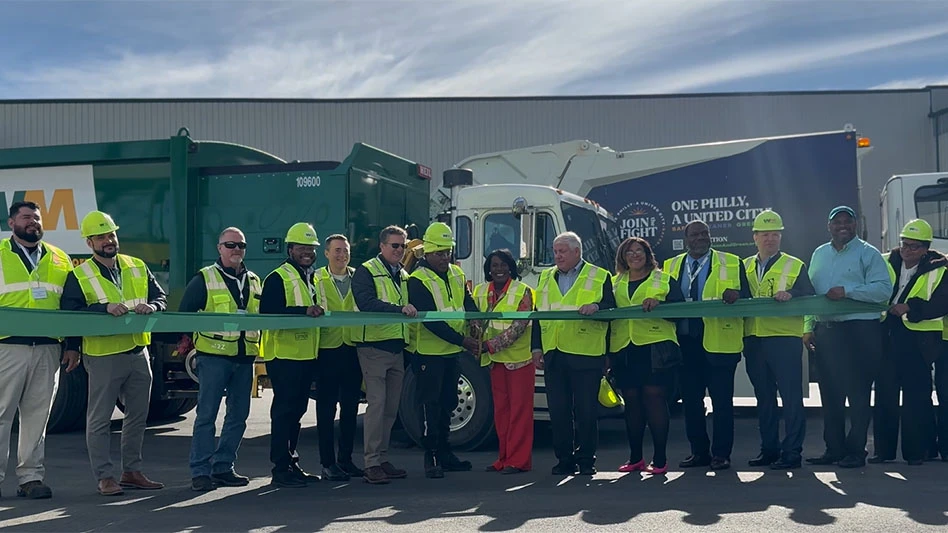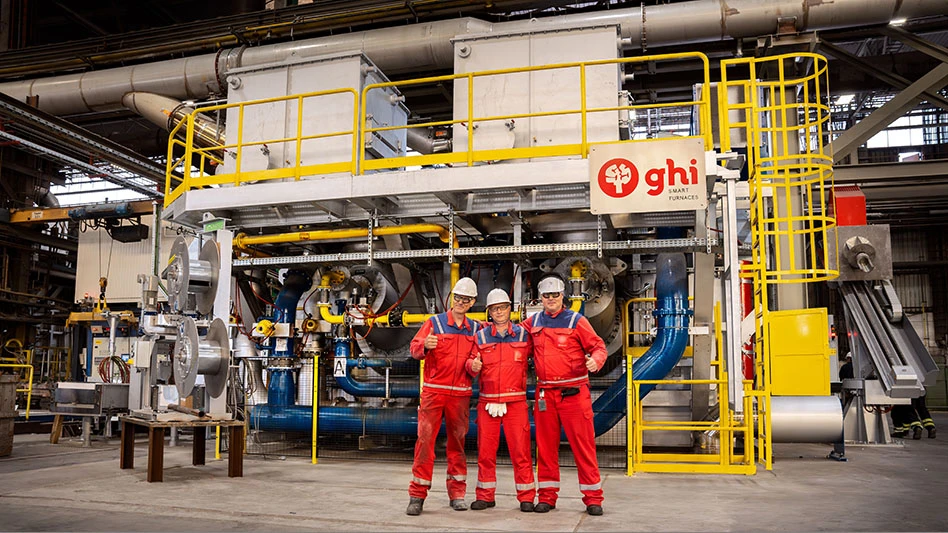
Market conditions from mid-2015 to the start of 2016 might have been the toughest the scrap metal recycling industry has seen in the past 30 years. That statement is how Sims Metal Management CEO Galdino Claro begins his review in the company’s 2016 annual report. Sims, which maintains executive offices in New York City and in Sydney, celebrates 100 years in the metals recycling industry in 2017. The company’s 2016 fiscal year ran from July 1, 2015, through June 30, 2016.
“The market conditions … were not only the most difficult during my time at Sims Metal Management but perhaps the toughest the industry has seen in the past 30 years,” Claro says. He began his career with Sims in late 2013.
“Lower commodity prices and declining export demand placed further pressure on secondary metals volumes in North America,” Sims says in its 2016 annual report. In particular, U.S. exports of nonferrous metals weakened, with copper and aluminum scrap declining 9 percent and 13 percent, respectively, the company notes.
The substantial decline in commodity prices had “negatively impacted the economic attractiveness of secondary metal collection,” according to Sims.
The dual challenges of lower commodity prices and volumes required Sims, and many other metals recyclers, to take action.
Within the North American market, Sims sold or idled 10 facilities as part of a resetting plan aimed at divesting noncore and underperforming assets outside of key markets in fiscal year 2016.
In addition to these steps, Sims says it took actions related to cost savings, including reducing staff by 12 percent, streamlining overhead costs and improving metal margins. These measures “have driven a meaningful reduction in the operational fixed cost base” for Sims, the company says, with the overall effect of the resetting leading to “a meaningful improvement in earnings.”
Sims says it expects its North American metals business segment to strengthen during its 2017 fiscal year.
Top tonnage
Nonferrous scrap processors across North America have made many changes over the last few years to ensure they’re around in the coming years. This is reflected in Recycling Today’s updated list of North America’s 20 largest nonferrous scrap processors, which is ranked based on nonferrous scrap processing volumes in 2016.
Sixteen of the 20 companies that were on the 2015 list appear on the most recent edition of the list. Two of the companies that ranked on the 2015 list—Behr Iron & Metal and Newell Recycling Southeast—have been acquired by companies on the 2017 list: at No. 8, St. Louis-based Alter Trading Corp., and, at No. 7, SA Recycling, Orange, California, respectively.
The four companies that are new to the 2017 list include SA Recycling; Huron Valley Steel, Trenton, Michigan; Schupan & Sons Inc., Kalamazoo, Michigan; and Shapiro Metals, St. Louis.

Shapiro Metals, which had been featured on previous editions of Recycling Today’s list of the largest nonferrous scrap processors in North America, was edged out of the No. 20 spot in 2015 by Wise Recycling, the only new entrant that year.
On the move
As with Sims, some scrap metal recyclers sold, shuttered or idled facilities, while others made acquisitions. Of the 16 companies making the list again, six businesses added facilities, while another six closed or sold locations.
In mid-August 2016, Sims sold six facilities in Mississippi and Tennessee to OmniSource Corp., a subsidiary of Fort Wayne, Indiana-based steelmaker Steel Dynamics Inc. OmniSource ranks No. 1 on this list.
In mid-September, Ferrous Processing and Trading Co. (FPT), headquartered in Detroit, announced its purchase of two Sims operations in Detroit and in Toledo, Ohio. FPT ranks No. 10 on the 2017 list.
SA Recycling acquired Newell Recycling Southeast LLC, including a shredder installation in El Paso, Texas, and all of its operations in Georgia and Alabama, says Mark Sweetman, chief financial officer for SA. This purchase helped SA Recycling attain the No. 5 spot on this year’s list.
In January 2017 Schupan & Sons Inc. announced the purchase of a majority interest in Trinity Metals, an Indianapolis recycler of ferrous and nonferrous metals, magnesium and specialty metals, electronic scrap, fiber and plastics. Schupan & Sons ranks No. 12 on this year’s list of the largest nonferrous scrap processors.
Marc Schupan, president of Schupan & Sons, said at the time of the announcement that the acquisition of Trinity fits Schupan’s growth strategy for its recycling division.
Schupan & Sons says it expects the partnership to allow for a more diverse product offering while broadening and simplifying its service area for existing key accounts.
The company says Trinity Metals is one of the largest postconsumer magnesium scrap processors in the United States. Trinity Metals produces custom-made, mill-ready magnesium scrap that can be directly charged into aluminum furnaces. Trinity also offers a range of alloying products for aluminum producing plants.
Encouraging infrastructure
With the Trump administration now in office, scrap companies are looking to the president’s promise for an infrastructure bill. With nonferrous metals markets influenced by the construction sector, this could have a dramatic effect on metals.
In February 2017, Schnitzer Steel President and CEO Tamara Lundgren met with President Trump and Canadian Prime Minister Justin Trudeau at the White House for a roundtable discussion about America’s infrastructure and the role of women in the workforce. Lundgren said at the time that the roundtable was “a productive opportunity to highlight matters that are important to our business.”
She noted how “infrastructure investment is important to the steel and metals recycling industries.”
Lundgren continued, “My focus in this meeting was to explore ways in which the public and private sectors can partner to spur investment in infrastructure and create jobs.”
At ConExpo-Con/Agg March 9, 2017, in Las Vegas, the Association of Equipment Manufacturers (AEM), Milwaukee, Chairman Michael Haberman, president of Gradall Industries Inc., New Philadelphia, Ohio, and AEM President Dennis Slater emphasized their support for a major infrastructure bill.
Haberman said of the industry, “We want to continue to grow,” adding that he wanted to use ConExpo as a platform to “urge President Trump and congress to follow through on their campaign promises and to pass a major infrastructure bill. ... a major infrastructure package would be a significant benefit to the equipment manufacturing industry and, thus, the whole economy of the United States.”
However, that same week during C&D World, the annual meeting of the Milwaukee-based Construction & Demolition Recycling Association (CDRA), March 8 in Las Vegas, market analyst Eli Lustgarten, president of ESL Consulting, St. Louis, said other items likely would take precedence over infrastructure, including fiscal growth, health care, reduction and elimination of regulations and tax reform.
“We’re not going to see any effect of infrastructure spending in 2017,” Lustgarten said. “The priority is health care, regulation and taxes.”
He called 2017 “a transition year.”
Paying attention to pricing
In its annual report, Sims notes that average selling prices for nonferrous and ferrous scrap were lower as prices dropped in the first half of its 2016 fiscal year.
Copper prices have been affected by the mostly weaker commodities environment, the stronger dollar, the surge of stocks in London Metal Exchange (LME) warehouses and revised supply expectations, according to the March 13 Weekly Market Report e-newsletter from the Institute of Scrap Recycling Industries (ISRI), Washington.
As of late February, copper prices had increased by nearly 25 percent since September 2016. However, copper prices trended downward in early March.
“In New York, COMEX May copper futures traded as low as $2.576 per pound on [March 9] after having started the week above $2.70 per pound. Since the beginning of March, closing copper stocks in LME warehouses have swelled by more than 130,000 tons to 331,200 metric tons as of [March 10],” according to the report.
The March 13 Weekly Market Report adds that a strike at Freeport’s Cerro Verde mine in Peru provided some support as the LME official three-month asking price for copper stabilized at $5,729 per ton March 10. Reuters reported that workers at the mill started an indefinite strike March 10 “that halted output of about 40,000 tons per month at Peru’s top copper mine.”
As for aluminum, the United States Geological Survey (USGS) shows that in 2016 aluminum recovered from purchased scrap in the United States was about 3.54 million tons, of which about 58 percent came from new (manufacturing) scrap and 42 percent from old scrap (discarded aluminum products).
Some of the positive sentiment for aluminum is being driven by potential cuts in Chinese aluminum production arising from the Chinese central government’s efforts to reduce air pollution, especially emissions from its manufacturing plants.
Nonferrous metals markets likely will face changes in the years to come, with the most adaptable scrap recycling companies coming out on top.

Explore the April 2017 Issue
Check out more from this issue and find your next story to read.
Latest from Recycling Today
- ReElement, Posco partner to develop rare earth, magnet supply chain
- Comau to take part in EU’s Reinforce project
- Sustainable packaging: How do we get there?
- ReMA accepts Lifetime Achievement nominations
- ExxonMobil will add to chemical recycling capacity
- ESAB unveils new cutting torch models
- Celsa UK assets sold to Czech investment fund
- EPA releases ‘National Strategy to Prevent Plastic Pollution’





